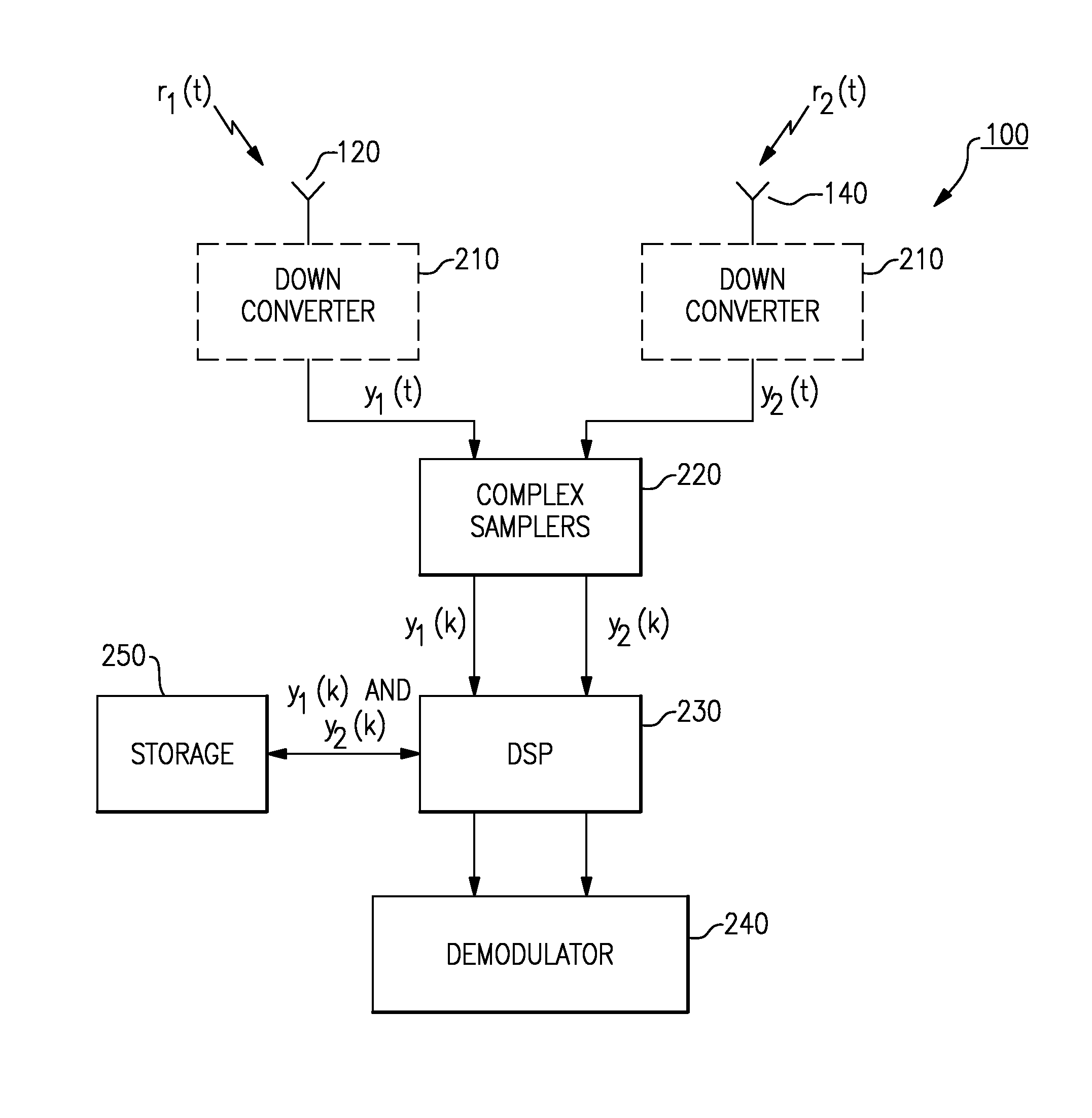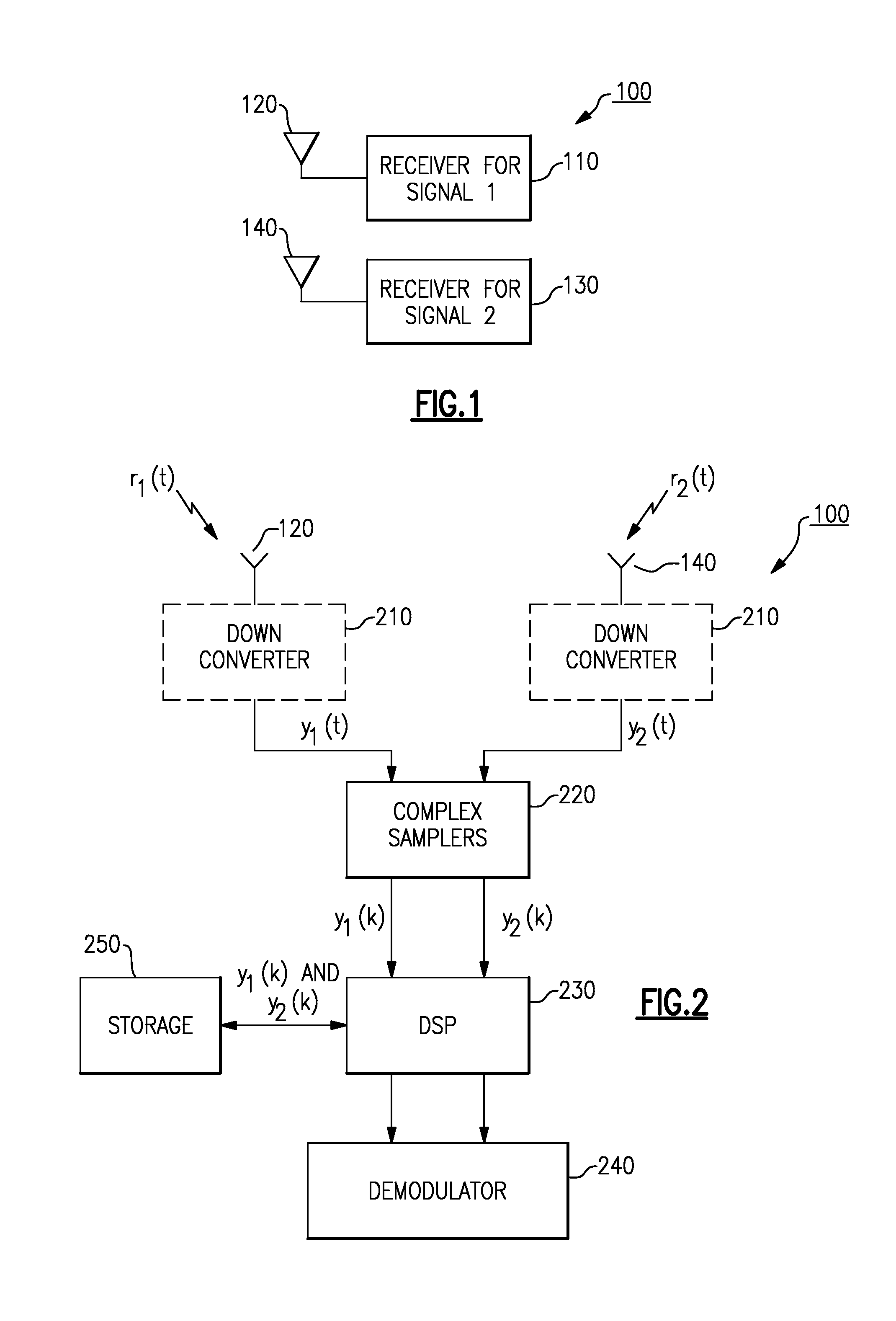Method and apparatus for cross-polarization compensation
a cross-polarization compensation and apparatus technology, applied in electrical apparatus, signal channels, transmission, etc., can solve the problems of loss of performance, high cost of transmitter components, and the cross-contamination of each signal data stream, so as to achieve cheaper and more effective effects
- Summary
- Abstract
- Description
- Claims
- Application Information
AI Technical Summary
Benefits of technology
Problems solved by technology
Method used
Image
Examples
Embodiment Construction
[0014]Cross-polarization compensation techniques have been studied for decades and some have been implemented in line-of-sight microwave relay systems in commercial systems; however, the complexity of known techniques has generally precluded their use in satellite communications systems. Aspects and embodiments discussed herein are directed to methods and apparatus for compensating for polarization loss in communications systems that use orthogonally spaced polarization, including a signal processing method that offers a considerable improvement in polarization contamination compensation at affordable costs. In one embodiment, a statistical decorrelation process is used to separate out two orthogonally polarized desired signals from noisy received signals that include these orthogonally polarized desired signals along with their cross-polarized components, thereby compensating for the polarization contamination. This compensation may provide significant benefits, including allowing ...
PUM
 Login to View More
Login to View More Abstract
Description
Claims
Application Information
 Login to View More
Login to View More - R&D
- Intellectual Property
- Life Sciences
- Materials
- Tech Scout
- Unparalleled Data Quality
- Higher Quality Content
- 60% Fewer Hallucinations
Browse by: Latest US Patents, China's latest patents, Technical Efficacy Thesaurus, Application Domain, Technology Topic, Popular Technical Reports.
© 2025 PatSnap. All rights reserved.Legal|Privacy policy|Modern Slavery Act Transparency Statement|Sitemap|About US| Contact US: help@patsnap.com



